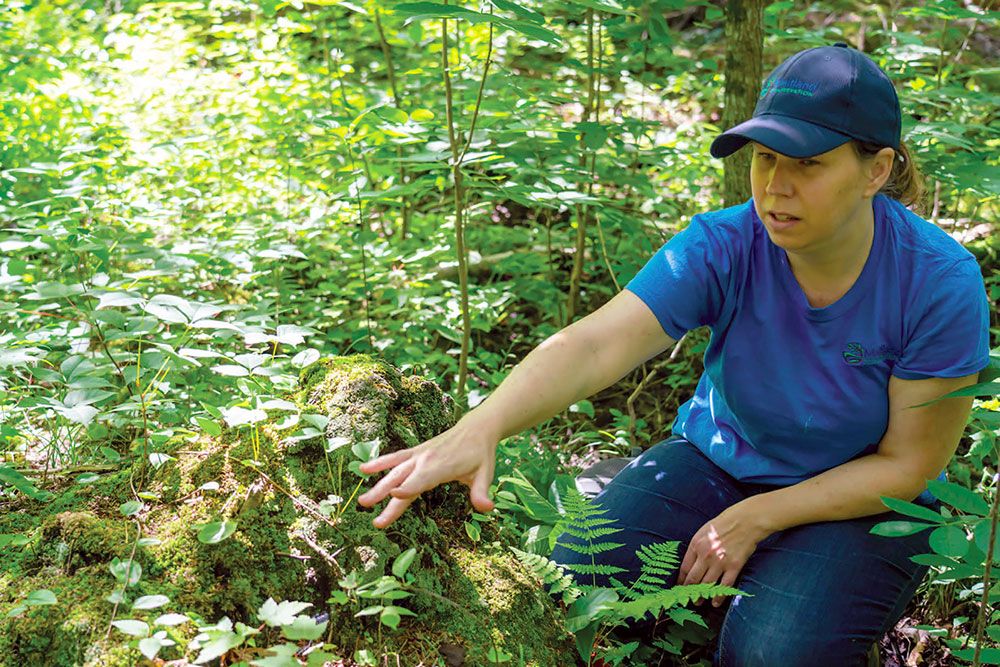Forest health faces threats

Results of local forest studies have Maitland Conservation watershed ecologist concerned
Ecologist concerned with findings in local forest studies
By Cory Bilyea, Local Journalism Initiative Reporter
The original article (copyright Midwestern Newspapers) appeared in The Wingham Advance Times (July 27, 2022). Excerpts are printed here along with a link to the full article:
Serious warning signs from local forests in the Maitland Conservation (MC) coverage areas have Watershed Ecologist Erin Gouthro concerned, with more than 80 per cent of the wooded plots showing signs of a “disturbance signal.”
Gouthro began the forest health study in 2021, working with some private landowners in the region to learn more about what is happening. The results so far have not been great, with more than 52 per cent of the study areas seeing more than four types of disturbances.
Gouthro and her team completed assessments on 103 forest plots on 42 private properties across the watershed.
Research is being undertaken in partnership with the University of Toronto Forestry Conservation.
Insects, disease, pathogens, trails, tree cutting, and storm damage are some of the culprits, caused by several risk factors like a lack of diversity, opened canopies, and invasives, Gouthro said in a report to Maitland Conservation.
To read the full article please visit this link courtesy of The Wingham Advance Times/Midwestern Newspapers:
Gouthro reported that the private woodlots studied had “Forest Health Disturbances.”
Other data from the woodlots studied:
- 87 per cent of plots had damage due to insects and disease;
- 69 per cent of plots had tree cutting;
- 51 per cent had the presence of invasive plants; and
- 46 per cent were experiencing trees uprooted and destroyed by wind.
The study methodology used by Gouthro and her team from Maitland Conservation has a focus area of 400 metres, which allows them to have a detailed look at everything going on in the area, along with aerial photography that helps to see what the patterns are in the forests.
“We can make some conclusions and create some stewardship and management directions, some options for the care and management of our forests so that we have them in 100, 200, 300 years.”
The second part of the study, being conducted this year, concentrates on land owned by Maitland Conservation.
The future of forests in southern Ontario is critical to humans, Gouthro said. More frequent studies need to be completed with consistent monitoring, and more work needs to be done to ensure that this essential part of our ecosystem survives.
"... (We) have to understand the forests, we have to manage the forest we have.”
The trees are crucial, but the soil is an essential part.
(There) are landowners who care and want to learn and do the right thing.
“... (They) need to understand what specific actions we can undertake,” she said. “But we need research and monitoring in a collective approach in order to supply that."
“We need to support our conservation authorities so that we can do this work and help our landowners because we work for our landowners at the end of the day.
“This is all for the public. This is the public repository, the public bank account of nature.”
The results of the second part of this forest health study should be available in 2023.
– The article excerpts and link to the article are made possible courtesy of The Wingham Advance Times (Midwestern Newspapers). For the full article visit Midwestern Newspapers.
